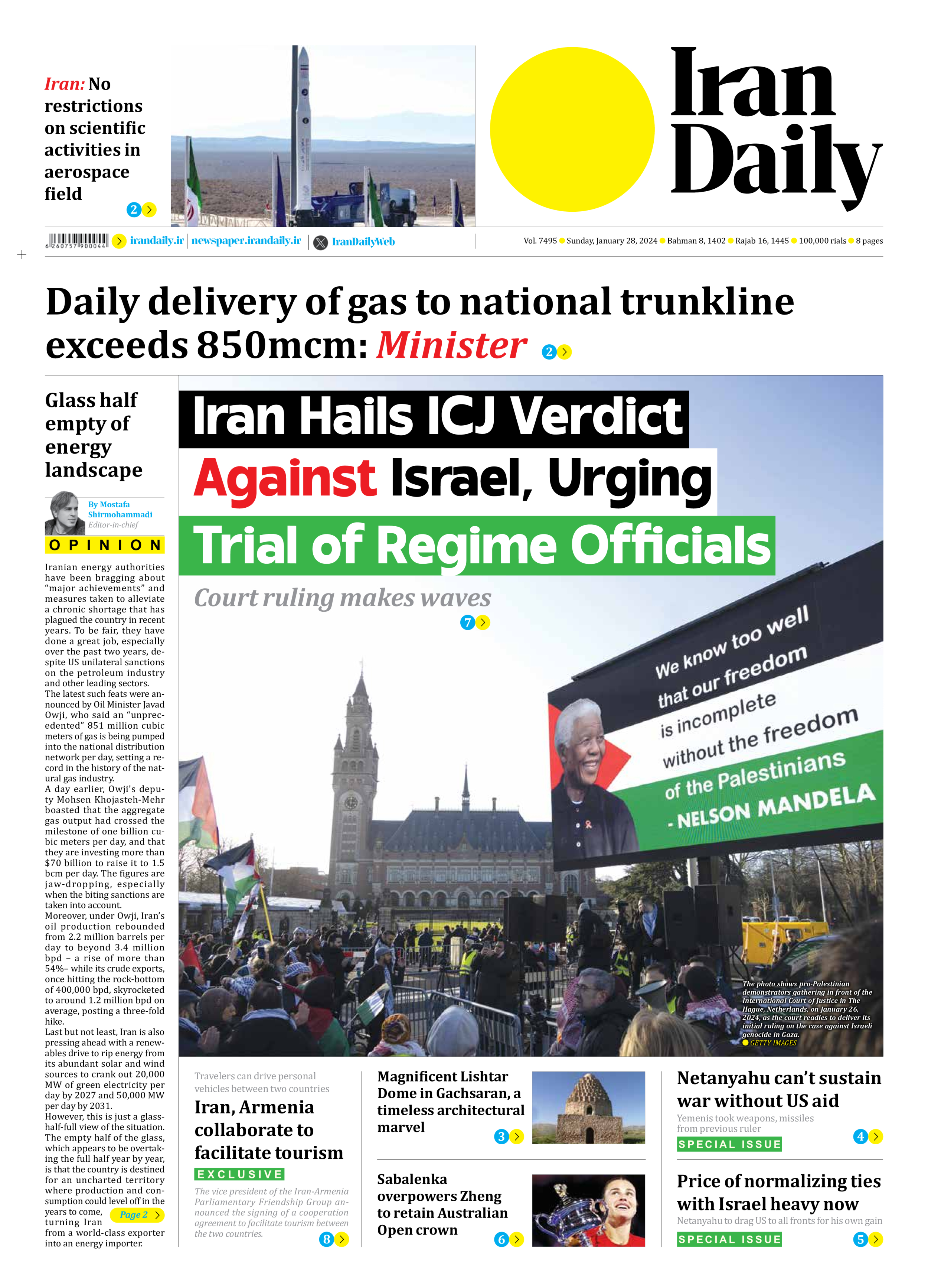
Glass half empty of energy landscape
By Mostafa Shirmohammadi
Editor-in-chief
Iranian energy authorities have been bragging about “major achievements” and measures taken to alleviate a chronic shortage that has plagued the country in recent years. To be fair, they have done a great job, especially over the past two years, despite US unilateral sanctions on the petroleum industry and other leading sectors.
The latest such feats were announced by Oil Minister Javad Owji, who said an “unprecedented” 851 million cubic meters of gas is being pumped into the national distribution network per day, setting a record in the history of the natural gas industry.
A day earlier, Owji’s deputy Mohsen Khojasteh-Mehr boasted that the aggregate gas output had crossed the milestone of one billion cubic meters per day, and that they are investing more than $70 billion to raise it to 1.5 bcm per day. The figures are jaw-dropping, especially when the biting sanctions are taken into account.
Moreover, under Owji, Iran’s oil production rebounded from 2.2 million barrels per day to beyond 3.4 million bpd – a rise of more than 54%– while its crude exports, once hitting the rock-bottom of 400,000 bpd, skyrocketed to around 1.2 million bpd on average, posting a three-fold hike.
Last but not least, Iran is also pressing ahead with a renewables drive to rip energy from its abundant solar and wind sources to crank out 20,000 MW of green electricity per day by 2027 and 50,000 MW per day by 2031.
However, this is just a glass-half-full view of the situation. The empty half of the glass, which appears to be overtaking the full half year by year, is that the country is destined for an uncharted territory where production and consumption could level off in the years to come, turning Iran from a world-class exporter into an energy importer.
Page 2







